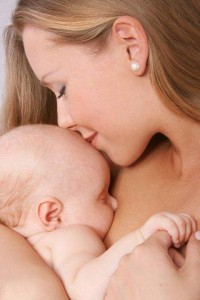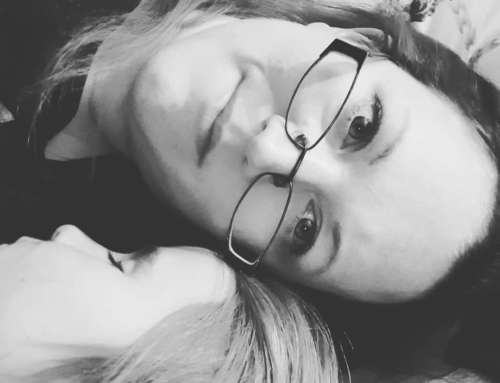
There are things we take for granted as being normal or expected in our culture simply because it’s the way things have been done in our lifetime. Maternal-newborn separation is one of these things. Generally speaking, WEIRD cultures tends to view this separation as normal and natural, even pushing it at times to suggest that even babies need to learn to be independent. However, as a species we are expected to be close to our babies at all times in order to facilitate survival. That is, we evolved in environments where we didn’t separate from our babies, but rather they remain with us at all times and this separation may be detrimental. Animal work with rat pups and even non-human primates highlights how damaging separation can be, but the question of applicability to humans remains.
In a step towards answering this, there have been several studies looking at the effects of maternal-newborn separation on factors like sleep, but little has been done to assess how stressful this separation is. Today I want to explore one of these studies because it is one that managed to try and directly assess how stressful separation is for neonates (< 3 days old). The study – Should Neonates Sleep Alone? – comes to us from Drs. Barak Morgan, Alan Horn, and Nils Bergman (who you likely know for his work on kangaroo care) and was published back in 2011. I realize this is an older study, but one that still has an impact as it is regularly cited in papers and policies on newborn and maternal care.
What is the study?
The study itself involved 19 full-term neonates born by c-section (just a convenience sample because moms were in the hospital for enough days to do the study) and utilized a within-subject methodology. This means that each neonate was exposed to both conditions, counterbalanced as to which came first. The conditions themselves were one hour either skin-to-skin with Mom or one hour in the hospital-provided bassinet next to Mom’s bed while loosely swaddled, facing Mom, but not touching her. This is important because this is not talking about longer separations than are often recommended, even for newborns. In fact, most hospitals want babies to be in that bassinet, not bedsharing and it’s expected that time will last longer than one hour.
The outcome measures were the time spent in active sleep and quiet sleep (measured using a well-validated behavioural scale of sleep), the time onset to sleep, as well as heart-rate variability which was assessed using what is called “interbeat intervals” or just the spacing between heart beats (chest electrodes were used to assess this). From the measures of heart rate variability, low-frequency and high-frequency heart-rate variability power was determined during the different sleep states. This really is saying that they included levels of activity in different bandwidths that are linked to various activation states. It is believed that higher activation of each is associated with activation of the autonomic nervous system and thus the heart-rate variability power would serve as a proxy for stress for these neonates. Full data was available for 16 of the neonates.
What did they find?
With respect to the sleep variables, the infants all spent significantly more time in quiet sleep when they were in contact with their mother. Specifically, all 16 neonates reached quiet sleep when in contact with their mother and spent an average of 17.5 minutes in quiet sleep in this condition. When separated from their mother, only 6 infants reached quiet sleep at all and only spent an average of 2.4 minutes in quiet sleep, an 84% decrease. There were no differences in the amount of time in active sleep in both conditions (contact or separation). Finally, it took a longer time to enter quiet sleep with an average of 19.5 minutes for contact sleep and 38.1 minutes when separated.
The researchers used normative units for power in order to make comparisons between neonates (a standard procedure) and the difference was quite large when the neonates were in active sleep, with the separation condition showing a power of 2.099 versus .759 in the contact condition, an increase of 176%. There were no interactions with other variables either, just the main effect of contact or not. With respect to heart-rate variability in quiet sleep, the power was also lower in the contact condition versus the separation condition, but with such a small sample (only the 6 neonates who had quiet sleep in both conditions) the difference was non-significant.
These results are thought to represent that neonates are likely too anxious to fall into this quiet sleep which is an important period of sleep for neurological development. The researchers review various other possible reasons for the shift in sleep and do a good job of discounting why the results would not be due, for example, to temperature differences. The hypothesis is that the stress response – which has been found to negatively affect quiet sleep in infants – is the cause of the struggle. The stress activation would result in the high heart-rate variability power detected as a means of activation of the autonomic nervous system as well as activating the HPA axis (which produces cortisol) and these work together to make falling into quiet sleep harder (as evidenced by the latency) and sustaining quiet sleep harder (as evidenced by the time in quiet sleep). Being in contact with the mother provides a buffer to this, lowering autonomic nervous system activation and thus also lowering activation of the HPA axis.
In short, being separated – even for an hour – from the mother is deemed to be a highly stressful experience for the neonate. This may have longer-term impacts for the neonate given the crucial role of quiet sleep in neurological maturation. For example, quiet sleep seems to enable the connectivity between various cortical areas in the brain and is also thought to help consolidate waking experiences. Taken together, the researchers argue that contact with the mother is the species-expectant behaviour of the neonate and violating this seems to result in increased stress for the neonate, at least during these early days.
Any problems?
There are actually a couple considerations to be discussed. The first is with the sleep measure of latency. This is more of a nuanced consideration here because most infants could not get into quiet sleep which is certainly indicative of something different compared to the behaviours seen in the contact condition. However, because the analysis of latency was on the entire sample, not just for those who entered quiet sleep, the numbers for the separation condition are going to be inflated as each infant who didn’t enter quiet sleep would have had a latency of 60 minutes. With an average of 38.1 and 10 children who never entered it, the remaining latency for the other 6 children would have had to be much lower than the 19.5 minutes in the contact condition.
What this means is up for speculation, but it would suggest that the timing for those infants was faster when alone. As such, we would want to ask what it was about these infants that may have led to a shorter latency to quiet sleep even though there was still an inability to stay in quiet sleep (which was actually longer when again looking at just those who hit it at 5.5 minutes, but still lower than in the contact condition). If the argument is that stress leads to a struggle to fall into quiet sleep, that explanation won’t work for the subset of children who did enter quiet sleep.
The second potential concern is to do with the way in which the heart rate variability power was analyzed. Because the data was not normally distributed, the researchers utilized a log transformation for the data in active sleep. This is a mathematical way to normalize the data so that statistical tests that require normally distributed data can still work. The problem – as has become more of an issue people are aware of since the publication of this (so again, not inherently their fault) – is that this can pose problems for the interpretation of the data because you aren’t actually analyzing the data, but data that has already been transformed. So when we talk about a 176% increase, that’s on the transformed data and may not be the same as if the data was not transformed.
I have to be clear that I say “may” because sometimes it doesn’t have an effect at all! People have looked at various datasets and utilized different methods to find sometimes we have huge changes to the results and sometimes none at all. The problem is that we just simply don’t know. I would say, though, that because the data here maps a lot of the other heart-rate variability data in neonates that have looked at similar situations, we can hopefully assume that the findings are valid. (Of course, I don’t know if others used the log transformation too.)
Given these issues, do we throw out the data? Not at all. As I said, these are nuanced issues that may or may not affect the findings. I think the issue with the quiet sleep latency is more interesting because it affects the interpretation of the findings, but really just raises different questions that could be explored in the future. I will also add that the researchers were very cautious about these results in being clear they are preliminary and should be replicated and followed up on with other studies. Specifically, they suggest looking at how long this stress response occurs, utilizing other methods of stress reactivity, and controlling for temperature as that may have inadvertently altered the heart-rate variability. In the meantime, we have to make do with this particular study which certainly does show us the differences in these conditions, even if the meaning behind them isn’t as clear as we’d like.
Relevant References
Changyong, F. E. N. G., Hongyue, W. A. N. G., Naiji, L. U., Tian, C. H. E. N., Hua, H. E., & Ying, L. U. (2014). Log-transformation and its implications for data analysis. Shanghai archives of psychiatry, 26(2), 105.
Császár-Nagy, N., & Bókkon, I. (2018). Mother-newborn separation at birth in hospitals: a possible risk for neurodevelopmental disorders?. Neuroscience & Biobehavioral Reviews, 84, 337-351.
Morgan, B. E., Horn, A. R., & Bergman, N. J. (2011). Should neonates sleep alone?. Biological psychiatry, 70(9), 817-825.
Shaffer, F., & Ginsberg, J. P. (2017). An overview of heart rate variability metrics and norms. Frontiers in public health, 5, 258.
Stuebe, A. (2020). Should infants be separated from mothers with COVID-19? First, do no harm. Breastfeeding Medicine, 15(5), 351-352.






Leave A Comment